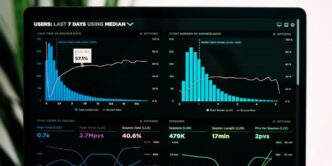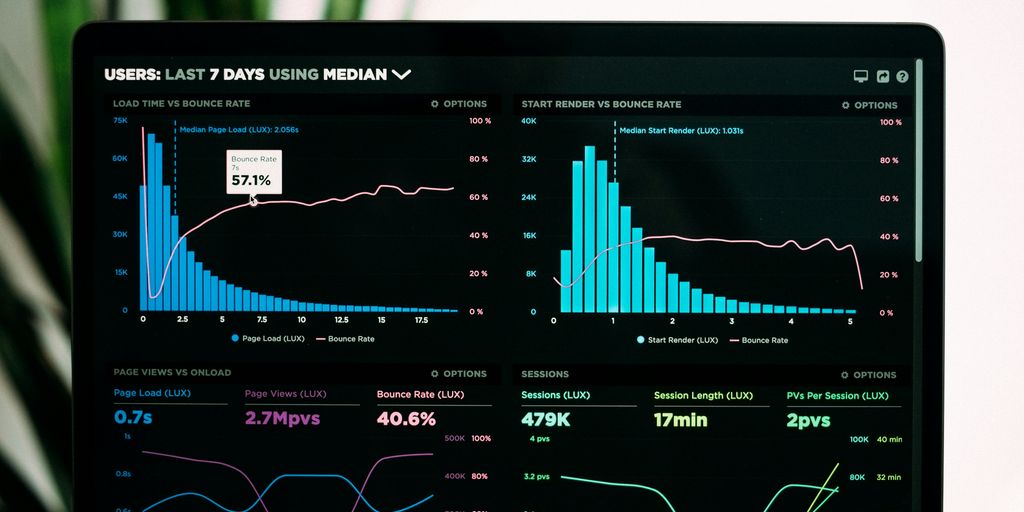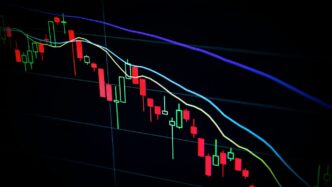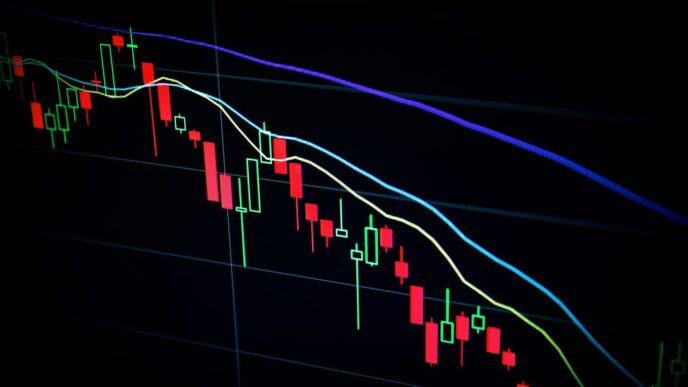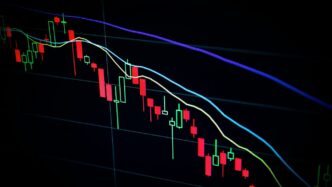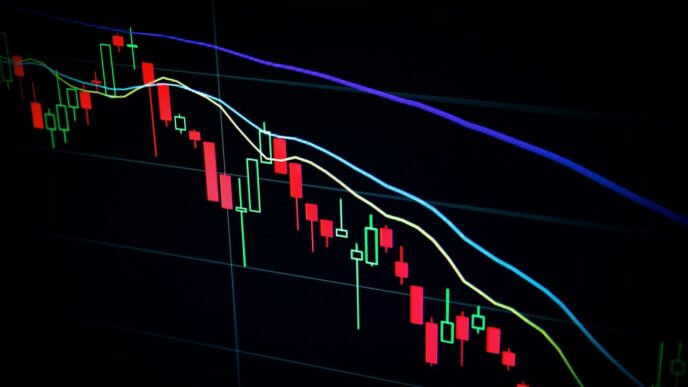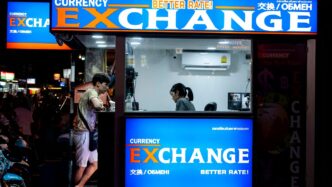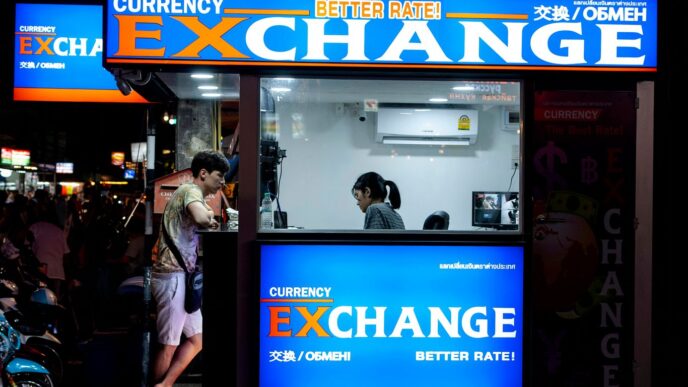Have you ever wondered what makes certain parts of the economy tick? Like, why do some interest rates go up and down? We’re going to talk about 2 year yields. These are a big deal for your money, whether you’re saving it or borrowing it. It’s not as complicated as it sounds, and understanding it can really help you make better money choices.
Key Takeaways
- 2 year yields are closely tied to what people expect the Federal Reserve to do with short-term interest rates.
- Things like inflation and how well the economy is doing have a big impact on 2 year yields and longer-term bond returns.
- The Federal Reserve’s actions, like changing interest rates or buying bonds, directly affect 2 year yields.
- Looking at the yield curve, which shows different bond maturities, can tell you a lot about what investors think is coming for the economy and interest rates.
- Changes in 2 year yields can influence interest rates for loans, and they can also show how confident people are about the economy.
Understanding 2 Year Yields
Okay, let’s talk about 2-year yields. It might sound a bit dry, but honestly, understanding these yields can really help you make smarter choices with your investments. It’s all about knowing what’s going on in the short-term, and how that impacts the bigger picture.
Defining Treasury Yields
So, what exactly is a Treasury yield? Basically, when the government needs money, it sells debt in the form of Treasury securities. These can be bills, notes, or bonds, depending on how long the debt lasts. The yield is the return you get for investing in that debt. Think of it like this: you’re lending money to the government, and the yield is the interest they pay you. The Treasury yield is expressed as an annual percentage.
To calculate the Treasury yield, you can use the following formula:
Treasury Yield = [Coupon Payment + ((Face Value – Purchase Price) / Years to Maturity)] / [(Face Value + Purchase Price) / 2]
For example, if you buy a 10-year note with a 3% coupon for $10,300, the yield calculation would be:
Treasury Yield = [300 + ((10,000 – 10,300) / 10)] / [(10,000 + 10,300) / 2] = 2.66%
Factors Influencing Short-Term Yields
Several things can push short-term yields up or down. One of the biggest is the Federal Reserve. The Fed sets the federal funds rate, which is the target rate that banks charge each other for overnight lending. This rate has a ripple effect on other short-term interest rates, including 2-year Treasury yields. Economic data also plays a big role. Strong economic growth can lead to higher yields, as investors anticipate inflation and the Fed raising rates. Conversely, weak economic data can push yields lower, as investors seek safety in government bonds. Investor sentiment matters too. If investors are feeling optimistic, they might be more willing to take on riskier assets, pushing yields on safe-haven assets like Treasuries down. It’s a complex dance of different factors all influencing each other.
The Role of Federal Funds Rate Expectations
Expectations about where the Federal Funds Rate is headed are HUGE when it comes to 2-year yields. The market is always trying to predict what the Fed will do next. If the market thinks the Fed is going to raise rates, 2-year yields will likely rise in anticipation. If the market expects the Fed to cut rates, 2-year yields will probably fall. It’s all about what people think is going to happen. These expectations are built on economic data releases, speeches by Fed officials, and general market sentiment. Keeping an eye on these indicators can give you a leg up in understanding where 2-year yields might be headed. It’s not a crystal ball, but it’s the best information we’ve got.
Impact of Inflation and Economic Growth on 2 Year Yields
Inflation Expectations and Fixed-Income Investments
Long-term yields are thought to be a mix of expected inflation and a risk premium. So, if inflation is expected to go up, fixed-income investments might look less appealing. Investors want returns that keep up with or beat the expected inflation. Basically, inflation eats into the real return on fixed-income stuff. If inflation is expected to drop, then fixed income becomes more attractive.
Economic Growth and Yield Curve Dynamics
Economic growth also plays a big role in Treasury yields. Investors usually want a higher yield for longer-term bonds because there’s more uncertainty about growth further out. The yield curve can even flip, with short-term yields higher than long-term ones, if people think a slowdown or recession is coming. This is called an inverted yield curve, and it’s something to watch out for. The Dow tumbled recently, partly due to concerns about economic growth.
Historical Relationship Between Yields and PCE Growth
Looking back at how the 10-year Treasury yield has moved with inflation and the economy can be helpful. There have been times when yields didn’t quite match what was happening with inflation. For example, in the 1960s and 1970s, inflation kept rising, but yields didn’t always keep up. Then, from 1982 to 1993, inflation came down, but yields were slow to follow. Bond yields seemed to react to past growth in personal consumption expenditures (PCE) rather than predicting future growth. The U.S. economy from 1993-2020 was in a low, stable inflation environment the whole time but economic growth and employment levels varied considerably. The period 1993 to 1999 was the start of a long period of steady 2%-3% inflation. Bond yields reflected the lower, and more stable, inflation rate, with considerably lower volatility. Early in the 21st century, the “dot com bubble” and “tech wreck” recession hit equities and the US economy, with the Treasury yield moving accordingly amid a flight to safety. It is worth considering how the 10-year Treasury yield moved historically with inflation and the state of the economy. There were quite a few deviations and they contribute to some interesting findings. For the 1960s and 1970s, the predominant theme was a continuous underestimation of rising inflation, with occasional exceptions. From 1965 to 1969, the inflation rate increased to around 5%, which provided the backdrop for a decade of high inflation. In the 1970s, the money supply expansion, along with the oil crisis, sent inflation into the double digits. This was the decade of “stagflation” with low growth, high unemployment, weaker personal consumption yet higher inflation. After inflation peaked in the early 1980s, 10-year yields showed some inertia. The period 1982 to 1993 marks a decade of continuous disinflation in which inflation expectations did not come down as fast as the actual inflation rate, while the economy in the 1980s grew relatively well. The key is bond yields lagged nominal growth in PCE both on the way up and again on the way down. In order words, to the extent that bond yields are tied to nominal growth in PCE, they tended to become anchored to past rates of growth rather than correctly anticipating faster or slower nominal growth in the future. They are reactive and not anticipatory. You can trade the yield curve to take advantage of these shifts.
Monetary Policy and 2 Year Yields
Federal Reserve’s Influence on Short-Term Rates
The Federal Reserve, or Fed, has a big impact on short-term interest rates, and that includes the 2-year Treasury yield. The Fed uses tools like the federal funds rate to influence these rates. When the Fed raises the federal funds rate, it generally becomes more expensive for banks to borrow money overnight. This increase often translates into higher yields for short-term securities like the 2-year Treasury. Conversely, when the Fed lowers the federal funds rate, borrowing becomes cheaper, and yields tend to fall. It’s a pretty direct relationship, though other factors can come into play.
Quantitative Easing and Its Effects
Quantitative easing (QE) is another tool the Fed uses, and it can have a significant impact on yields. QE involves the Fed buying assets, like Treasury bonds or mortgage-backed securities, to inject liquidity into the market. When the Fed buys these bonds, it increases demand, which can push prices up and yields down. The scale and duration of QE programs can really affect Treasury yields. However, the Fed is gradually reducing its balance sheet through a restrained approach, allowing securities to mature without replacement, rather than engaging in active sales of Treasuries and Mortgage-Backed Securities (MBS).
Shifting From Negative to Positive Real Interest Rates
For a while, we were in a situation where real interest rates (interest rates minus inflation) were negative. This happened when inflation was higher than nominal interest rates. Now, as interest rates have risen and inflation has come down from its peak, we’re seeing a shift back to positive real interest rates. This shift can influence the 2-year yield in a few ways:
- Increased attractiveness of bonds: Positive real rates make bonds more attractive to investors, potentially increasing demand and lowering yields.
- Impact on economic growth: Higher real rates can slow down economic growth by making borrowing more expensive for businesses and consumers.
- Fed policy expectations: The Fed’s commitment to maintaining a certain inflation target plays a role. If the Fed is determined to keep inflation low, positive real rates could stick around for a while, influencing yields accordingly.
Many factors like inflation expectations, economic growth and monetary policy are in play in determining yields for 10-year Treasuries. As interest rates have risen and the inflation rate declined from its 2022 peak of over 9%, the real interest rate has once again entered positive territory. If the Fed remains steadfast in its commitment to maintaining a 2% inflation target, this positive real interest rate environment could persist for an extended period, possibly years.
The Yield Curve and 2 Year Yields

The yield curve is a pretty important tool for understanding the bond market and the overall economy. It shows the relationship between the yields of bonds with different maturities. The 2-year Treasury yield plays a key role in shaping this curve, especially because it’s sensitive to changes in monetary policy and economic expectations. Let’s break it down.
What Is a Yield Curve?
Basically, a yield curve is a line that plots the yields of bonds with equal credit quality but different maturity dates. For U.S. Treasuries, this ranges from short-term bills (like 1-month) to long-term bonds (like 30-year). The shape of the yield curve can tell us a lot about investor sentiment and future economic conditions.
Think of it like this: you’re looking at a snapshot of what investors demand to lend money to the government for different periods. The curve is usually upward sloping, but it can also be flat or even inverted. The Treasury Yield Curve is a visual representation of these yields across different maturities.
Interpreting Normal and Inverted Yield Curves
A normal yield curve slopes upward. This means that longer-term bonds have higher yields than shorter-term ones. This makes sense, right? Investors usually demand more compensation for tying up their money for a longer time, due to things like inflation and other risks. A normal yield curve usually signals that the economy is expected to grow.
An inverted yield curve is when short-term yields are higher than long-term yields. This is less common and often seen as a warning sign. It suggests that investors expect economic growth to slow down, or even contract. The idea is that they’re willing to accept lower yields on long-term bonds because they anticipate that interest rates will fall in the future as the economy weakens.
A flat yield curve is when short-term and long-term yields are about the same. This can happen during a transition between a normal and inverted curve, or vice versa. It suggests uncertainty about the future direction of the economy.
Using the Yield Curve for Investment Strategy
The yield curve can be a useful tool for making investment decisions. Here are a few ways investors use it:
- Predicting Economic Conditions: As mentioned, the shape of the yield curve can provide clues about future economic growth. An inverted curve might prompt investors to reduce their exposure to riskier assets, like stocks.
- Bond Portfolio Management: Investors can adjust the duration of their bond portfolios based on the yield curve. For example, if the curve is expected to steepen (long-term yields rising faster than short-term yields), they might increase their holdings of longer-term bonds.
- Identifying Relative Value: The yield curve can help investors identify bonds that are overvalued or undervalued relative to their peers. If a bond’s yield is significantly higher or lower than what the curve suggests, it might present an opportunity.
Here’s a simple example:
| Maturity | Yield (%) |
|---|---|
| 3-Month | 5.20 |
| 2-Year | 4.70 |
| 10-Year | 4.30 |
| 30-Year | 4.40 |
In this case, the yield curve is inverted between 3-month and 10-year maturities, which could signal a potential economic slowdown. Investors might consider shifting towards shorter-term bonds or other less risky investments. Understanding how yields are determined is key to interpreting the yield curve effectively.
Investment Implications of 2 Year Yields
Assessing Risk and Reward in Short-Term Bonds
Okay, so you’re looking at short-term bonds. What’s the deal? Well, 2-year Treasury yields are a pretty good indicator of the risk-free rate of return over that time frame. But remember, it’s not totally risk-free. Inflation can still eat into your returns, and there’s always the chance that interest rates could rise, making your bond less attractive.
Think of it this way:
- Higher yield = higher potential return, but also potentially higher risk (maybe the market expects inflation to jump).
- Lower yield = lower potential return, but generally less risk (maybe the market expects stable or falling inflation).
- Consider the credit quality of the bond. Treasuries are generally considered the safest, but corporate bonds offer higher yields to compensate for their higher risk.
Adjusting Investment Strategies Based on Yield Curve Shifts
The yield curve is your friend here. If the yield curve is steepening (long-term yields rising faster than short-term yields), it could signal economic growth, and you might want to shift some investments into riskier assets like stocks. If it’s flattening or inverting (short-term yields higher than long-term yields), that could signal a slowdown, and you might want to increase your allocation to bonds. The bond market’s next move is always uncertain, but the yield curve can give you clues.
Here’s a simple table to illustrate:
| Yield Curve Shape | Implication | Potential Strategy |
|---|---|---|
| Steepening | Economic growth expected | Consider increasing exposure to stocks |
| Flattening | Economic growth slowing expected | Consider increasing exposure to bonds |
| Inverted | Recession potentially on the way | Consider moving to more defensive assets, like cash |
Diversifying Portfolios with Treasury Products
Don’t put all your eggs in one basket! Treasury products come in all shapes and sizes, and they can be a great way to diversify your portfolio. You’ve got Treasury bills (short-term), notes (medium-term), and bonds (long-term). You can also invest in Treasury Inflation-Protected Securities (TIPS), which are designed to protect you from inflation. Trading the yield curve can be complex, but diversifying with different maturities can help manage risk.
Here are some options to consider:
- Treasury Bills: Great for short-term cash management.
- Treasury Notes: A good balance of risk and return.
- Treasury Bonds: Suitable for long-term investors seeking income.
- TIPS: Protect your portfolio from inflation. They are fixed-income investments that adjust with inflation.
Real-World Applications of 2 Year Yields

Influence on Consumer and Business Loan Rates
The 2-year Treasury yield acts as a benchmark for many short-term interest rates throughout the economy. When the 2-year yield rises, it generally becomes more expensive for consumers and businesses to borrow money. This is because banks and other lenders often use the 2-year yield as a base rate when setting interest rates on products like:
- Adjustable-rate mortgages (ARMs)
- Car loans
- Small business loans
- Credit cards
For example, if the 2-year yield increases by 0.5%, a bank might increase its prime lending rate by a similar amount, making it more costly for businesses to secure loans for expansion or operations. Similarly, consumers might see higher interest rates on their credit card balances or new auto loans. This can have a ripple effect, potentially slowing down consumer spending and business investment.
Gauging Investor Confidence in the Economy
The level and movement of the 2-year Treasury yield can provide insights into investor sentiment about the near-term economic outlook. A rising 2-year yield often indicates that investors expect stronger economic growth and potentially higher inflation, leading them to demand a higher return on their investments. Conversely, a falling 2-year yield may signal concerns about a potential economic slowdown or recession, as investors seek the safety of government bonds, driving up their prices and pushing yields down. Monitoring the yield on Treasury bills can be a useful tool for understanding market sentiment.
Identifying Potential Economic Slowdowns
One of the most closely watched signals derived from the 2-year Treasury yield is its relationship to longer-term yields, particularly the 10-year Treasury yield. When the 2-year yield rises above the 10-year yield, it creates an inverted yield curve. Historically, an inverted yield curve has been a pretty reliable predictor of economic recessions. The logic behind this is that investors are betting that short-term interest rates will eventually fall as the Federal Reserve responds to a weakening economy by cutting rates. While not every yield curve inversion leads to a recession, it’s definitely a warning sign that economists and investors pay close attention to. It’s a good idea to understand investment-grade short-dated bonds during these times.
Wrapping It Up: What This Means for You
So, what’s the big takeaway here? Well, understanding how 2-year yields work is pretty important for anyone looking to make smart money moves. These yields aren’t just some boring numbers; they actually tell us a lot about what’s going on with the economy and where interest rates might be headed. Keeping an eye on them can help you figure out if it’s a good time to save, borrow, or invest. It’s all about being a bit more informed, so you can make choices that feel right for your own financial situation. It’s not always easy to predict the future, but knowing a little more about these things definitely helps.
Frequently Asked Questions
What mostly affects 2-year Treasury yields?
Two-year Treasury yields are mainly shaped by what people expect the Federal Reserve to do with its main interest rate over the next two years. Things like how much money is available to borrow and other small factors can also play a part.
How does inflation affect bond yields?
When people expect prices to go up (inflation), fixed-income investments like bonds become less attractive. This is because investors want their money to grow faster than inflation. So, higher expected inflation can make bond yields go up.
What’s the difference between a normal and an inverted yield curve?
A normal yield curve means that longer-term bonds pay more interest than shorter-term bonds. This usually happens when people feel good about the economy. An inverted yield curve is the opposite: shorter-term bonds pay more interest. This can be a sign that the economy might slow down or even go into a recession.
How does the Federal Reserve influence Treasury yields?
The Federal Reserve’s actions, like changing interest rates or buying bonds (quantitative easing), have a big impact on Treasury yields. When the Fed raises rates, short-term yields usually go up.
How can investors use the yield curve to make decisions?
Investors can use the yield curve to guess what the Fed might do next with interest rates. It can also help them decide if they should invest in short-term or long-term bonds, depending on how the curve looks.
Why are Treasury yields important for everyday people?
Treasury yields are very important because they affect many other interest rates, like those for home loans, car loans, and business loans. They also show how confident investors are about the economy’s future.

